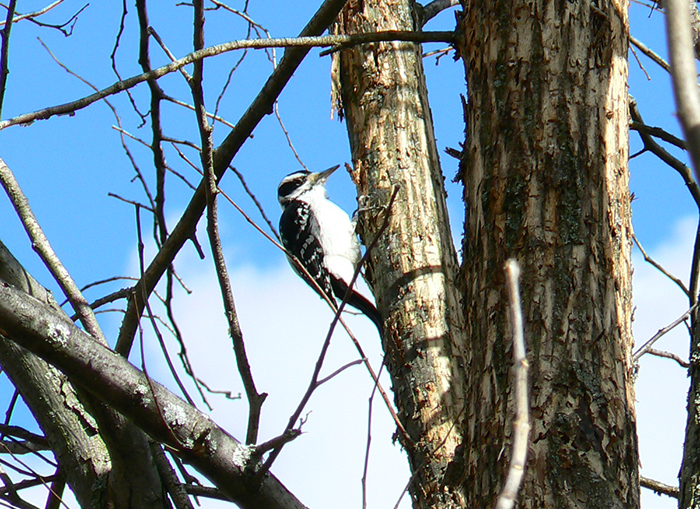Benefits of Plantation Management
Plantations are established and managed on GSCA lands to achieve a variety of goals, such as to increase forest cover, create wildlife habitat, protect soil and water resources, and produce wood products.
Newly established plantations usually have one or two tree species, which is considered low diversity. These plantations will benefit a smaller number of wildlife and perform some ecological services. As the plantations are thinned, the remaining trees grow larger, natural regeneration occurs and the forest becomes more diverse. These growing plantations will become more valuable to a wider variety of wildlife and provide more ecological services. At the same time, valuable wood products are produced which help to offset the costs of management and fund other important conservation initiatives.
Forest Benefits
Plantation management improves the resilience of a forest by removing poorer quality trees during a thinning operation. The remaining forest will be healthier and will be better able to withstand environmental impacts and changes. Following a thinning, more light can also reach the forest floor, allowing native species to flourish and increasing diversity.

Environmental Benefits
Plantation thinning allows selected healthy trees to get even bigger, which store more carbon. It is important to note that when a tree dies, it releases that stored carbon, but the wood products that are produced through management store this carbon much longer.

Esthetic Benefits
Comparable to the initial stages of a housing development, the planned harvest of a plantation can look somewhat messy directly after due to the presence of machinery needed for effective tree removal. In the weeks and months following the thinning operation, natural processes and understory growth begin to restore damage to the forest floor and it becomes less apparent that management had occurred.
If plantations are left alone and not managed in this way, the trees will eventually grow too close together and understory plants and seedlings will not be able to grow. Naturally occurring forests, often hardwood/deciduous forests, can sustain themselves overtime due to the species ability to regenerate within that environment. Plantations are not established in the same way and need to be managed so they can stay healthy and beautiful for many years.

Wildlife Benefits
When a plantation is managed over time, the number of tree species increases, which allows for more biodiversity in the forest. Thinning operations also produce branches, logs, and woody debris that get left behind on the forest floor which provide habitat for all kinds of wildlife and enrich the soil.

Economic Benefits
While our primary goal is to manage plantations to be healthy, sustainable natural areas that provide ecological, social, and cultural benefits; revenue generation from harvest operations is a secondary objective, which helps offsets costs and funds other forest management and conservation projects. This process also supports the local wood product industry and is essential in the production of items we use every day like toilet paper!


